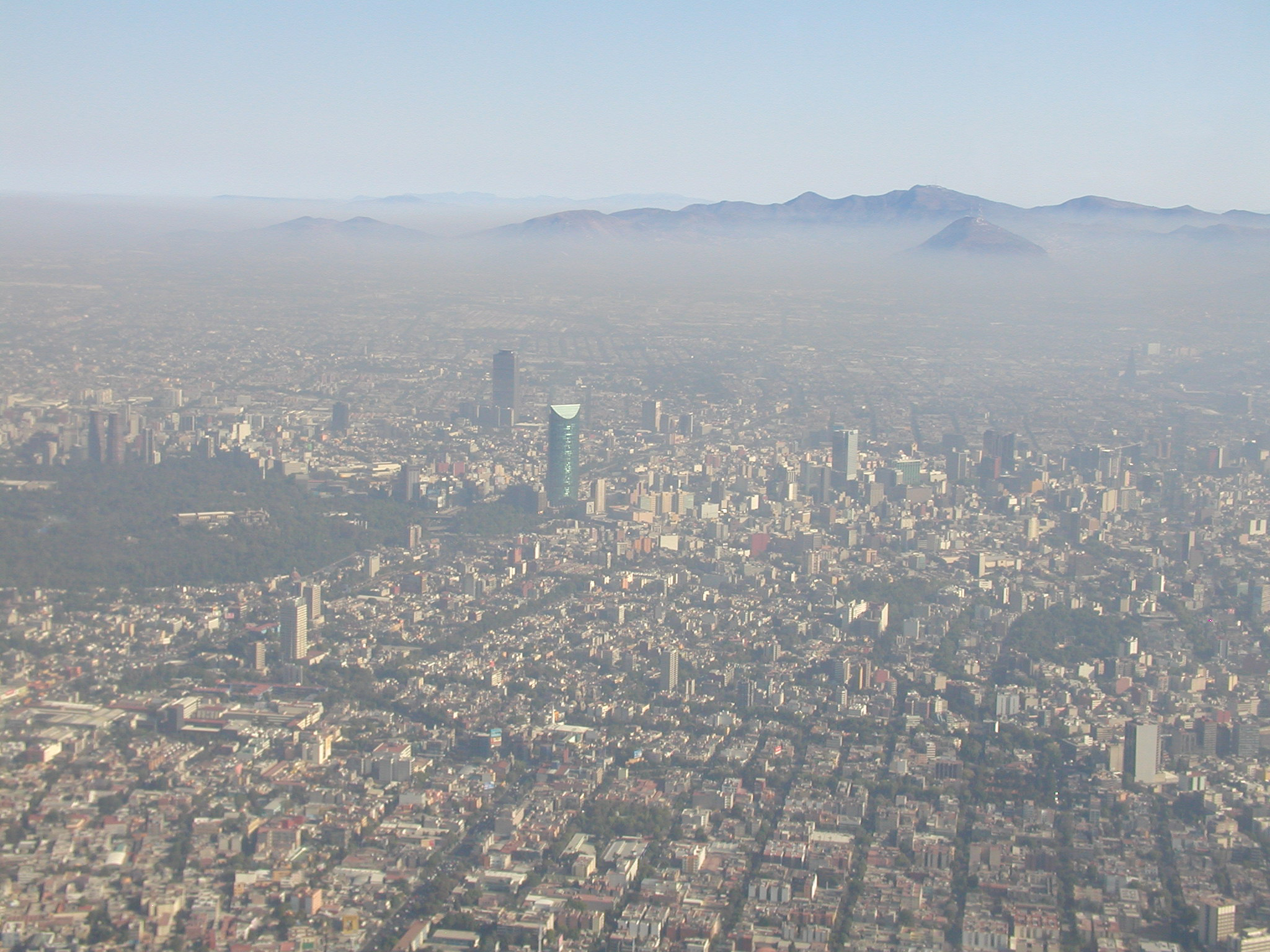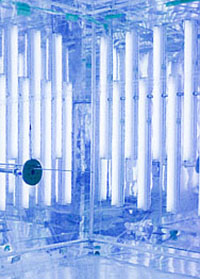Atmospher Sci & Global Chg
Research Highlights
January 2014
The Overambitious Other Carbon
Brown carbon works both sides of the climate equation

Aerosol particles provide the characteristic blanket of brownish haze over Mexico City.
Results: There is an atmospheric particle not satisfied with a single role in the climate. The ambitious culprit? Brown carbon aerosol steps outside the box and acts to both warm and cool the climate. A brown secondary organic aerosol (SOA) is thought to be created when gases that are emitted from both natural and man-made sources are oxidized under certain environmental conditions. Scientists at Pacific Northwest National Laboratory and the University of Nevada at Reno studied the light absorbing and reflecting abilities of SOA formed from alpha-pinene (α-pinene), an important gas that gives off a piney smell and is naturally emitted from both coniferous and deciduous forests. The study is an important step in the continued search for evidence that these particles form from naturally occurring gases and increase dramatically in the presence of pollution from cities.
"We found that brown carbon SOA from α-pinene is formed when it is oxidized by
nitrate radicals—formed from nitrogen dioxide and ozone—in the presence of highly acidic pre-existing aerosols and low relative humidity," said Dr. Rahul Zaveri, atmospheric scientist at PNNL and co-corresponding author of the study. "In addition, our study shows that α-pinene does not form brown SOA under the more typical atmospheric conditions."
Why It Matters: Soot and dust aerosol particles absorb light and tend to have a warming effect on the climate. Aerosol particles formed from sulfate, nitrate or sea salt scatter light and have a cooling effect. However, there is growing evidence of the presence of another class of light absorbing carbonaceous aerosols. Brown carbon aerosols, tiny suspended particles in Earth's atmosphere, can affect the climate by partially absorbing and reflecting the sun's energy. Identifying the specific gases that help form brown carbon SOA and understanding the physical and chemical conditions under which it forms will help provide a better representation of their radiative energy effects in climate models.

PNNL's Aerosol Test Chamber is used to study the aerosol lifecycle. Inside, the purple glow is generated by UV lights, simulating the sun. Data derived from experiments using the chamber are used for model validation and directly incorporated into climate models.
Methods: The research team produced SOA in an indoor environmental chamber reactor located at PNNL. They observed their particle mass and composition using a Time-of-Flight Aerosol Mass Spectrometer. They monitored the particle's light absorption and scattering characteristics using photoacoustic spectrometers (PAS) at four different wavelengths. The PAS, which directly measure light absorption by suspended particles, have a large dynamic range for aerosol optical measurements. The researchers produced the SOA in the laboratory chamber under systematically varying conditions by oxidizing α-pinene with ozone and nitrate radicals in the presence and absence of acidic conditions, and at very low and moderate relative humidity.
What's Next? The research team will continue to explore brown carbon SOA formation from other species such as isoprene, which is another important gas that is naturally emitted from forests.
Acknowledgments
Sponsors: Funding for this research was provided by the U.S. Department of Energy's (DOE) Atmospheric System Research (ASR) program and by the Environmental Molecular Sciences Laboratory (EMSL), a national scientific user facility sponsored by DOE's Office of Biological and Environmental Research and located at PNNL.
Research Team: Chen Song, Rahul Zaveri and John Shilling, PNNL; Madhu Gyawali, University of Nevada Reno, now at Desert Research Institute, Nevada; and W. Patrick Arnott, University of Nevada Reno.
User Facility: EMSL, Environmental Molecular Sciences Laboratory.
Research Area: Climate & Earth Systems Science
Reference: Song C, M Gyawali, RA Zaveri, JE Shilling, and WP Arnott. 2013. "Light Absorption by Secondary Organic Aerosol from α-Pinene: Effects of Oxidants, Seed Aerosol Acidity, and Relative Humidity." Journal of Geophysical Research 118:1-9. DOI: 10.1002/jgrd.50767.
